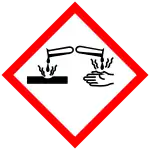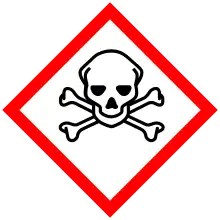 | |
| Names | |
|---|---|
| Preferred IUPAC name
N1,N1-Diethylbenzene-1,4-diamine | |
| Other names
N,N-diethyl-p-phenylenediamine DPD | |
| Identifiers | |
3D model (JSmol) |
|
| ChEMBL | |
| ChemSpider | |
| ECHA InfoCard | 100.002.014 |
| EC Number |
|
PubChem CID |
|
| UNII | |
| UN number | 1673 |
CompTox Dashboard (EPA) |
|
| |
| |
| Properties | |
| C10H16N2 | |
| Molar mass | 164.252 g·mol−1 |
| Hazards | |
| GHS labelling: | |
  | |
| Danger | |
| H301, H314 | |
| P260, P264, P270, P280, P301+P310, P301+P330+P331, P303+P361+P353, P304+P340, P305+P351+P338, P310, P321, P330, P363, P405, P501 | |
| Related compounds | |
Related compounds |
Color Developing Agent 2; Color Developing Agent 3; Color Developing Agent 4; |
Except where otherwise noted, data are given for materials in their standard state (at 25 °C [77 °F], 100 kPa).
Infobox references | |
Color Developing Agent 1 (CD-1) is the first in the series of color developing agents used in developing color films. It is the organic compound N,N-diethyl-1,4-benzenediamine (DPD), which is usually in the form of the monohydrochloride salt.[1] In color development, after reducing a silver atom in a silver halide crystal, the oxidized developing agent combines with a color coupler to form a color dye molecule.
Arthur Thomas Palin, a Fellow of the Royal Society of Chemistry, developed a widely used color based method of water testing using DPD to indicate the chlorine content of treated water.
See also
References
- ↑ "1,4-Benzenediamine, N,N-diethyl-, monohydrochloride". U.S. National Center for Biotechnology Information. Retrieved 21 January 2020.
This article is issued from Wikipedia. The text is licensed under Creative Commons - Attribution - Sharealike. Additional terms may apply for the media files.